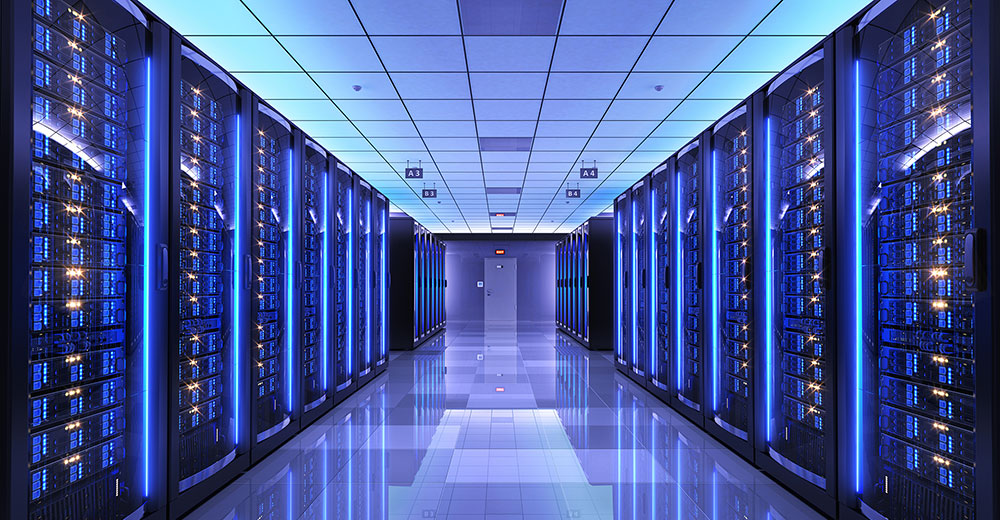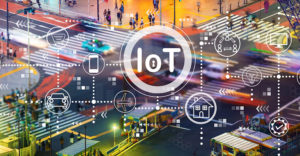As the world increasingly relies on artificial intelligence, the demand for efficient and scalable data centers has never been higher. AI applications require vast amounts of computational power, driving up energy consumption and raising concerns about the environmental impact.
Infineon Technologies, a leader in power management solutions, has emerged as a key player in addressing these challenges by collaborating with companies like Supermicro to enhance the energy efficiency of data centers.
Let’s examine how the growing demand for AI in enterprise and consumer markets impacts power consumption in data centers — and how Infineon’s partnership with Supermicro addresses these challenges.
Energy Demands in AI Data Centers
The explosive growth of AI-driven data centers is accompanied by skyrocketing energy requirements. The scale of this trend is nothing short of startling.
Data centers in 2010 accounted for about 2% to 3% of global energy consumption. Today, some estimates predict that data centers, including those driven by AI, could consume as much as 7% of the world’s energy by 2030, with some regions seeing much higher rates.
For instance, Ireland, a significant hub for data centers, could see as much as 32% of its energy devoted to these facilities by 2026.
The sheer volume of compute power needed to train modern AI models is growing at a rate that doubles every three to four months.
As a result, data centers require cutting-edge power solutions that can keep up with both the increased energy demand and the need for enhanced cooling systems to prevent overheating.
Infineon’s Semiconductor Solutions
Adam White, division president of Infineon’s Power and Sensor Systems Group, believes the key to addressing AI acceleration is the need for innovation in semiconductor technology.
In a recent interview with SmartTech Research, White stated that Infineon has stayed at the forefront of developing the hardware required to support the energy-hungry data centers of the future. The company focuses on providing power solutions from the “grid to the core,” meaning it is involved in each step of the power supply chain within a data center — from renewable energy inputs to power management within AI servers.
A critical component of Infineon’s strategy is silicon carbide (SiC) and gallium nitride (GaN) materials. These wide-bandgap semiconductors offer superior power efficiency and density, making them ideal for AI data centers that must pack more compute power into increasingly smaller spaces.
White explained that Infineon has been increasing its investments in these materials to meet the demand for more efficient and powerful semiconductor solutions. The company is also working on vertical power delivery methods that could be embedded closer to the processor, further reducing power losses and improving overall efficiency.
Supermicro and Green Computing
Infineon’s partnership with Supermicro demonstrates how these technological innovations are being implemented. Supermicro, a provider of green computing solutions, is leveraging Infineon’s high-efficiency power stages (TDA21490 and TDA21535) to reduce the energy consumption of its MicroBlade servers significantly.
These servers are designed to address the growing power needs of AI-driven data centers while minimizing the environmental impact.
The collaboration focuses on improving power usage effectiveness (PUE), a metric used to measure data center efficiency. By reducing the energy wasted in cooling and other non-computational processes, Supermicro and Infineon have worked together to create more sustainable data centers that can meet the increasing demands of AI applications without drastically increasing their carbon footprint.
One of the most significant advancements from this partnership is the ability to offer solutions that reduce power wastage while maintaining or improving performance. Adopting these high-efficiency power stages allows data centers to increase their compute density without requiring proportionally higher energy inputs, making it possible to handle more AI workloads with less power.
Cooling and Thermal Management
Another challenge that White highlighted during our conversation is the issue of cooling. As data centers grow in power density, managing heat becomes increasingly tricky. Approximately 50% of the energy consumed by a data center can be lost to cooling, representing a significant inefficiency.
While traditional air-cooling methods are still in use, many companies are now exploring advanced solutions like liquid and immersion cooling, where servers are submerged in liquid to manage heat more efficiently.
White also mentioned the exploration of more exotic cooling solutions, such as underwater data centers. While these may sound like science fiction, they are being actively researched and could become a reality in the near future.
These solutions are critical for maintaining the reliability and longevity of AI data centers, as overheating can lead to hardware failure and costly downtime, especially during the intensive training of large AI models.
Flexible Power Solutions for AI Hardware Platforms
Infineon’s appeal in the AI-driven data center space can be attributed to its agnostic approach to semiconductor design. White explained that the company tailors its power management solutions to meet each customer’s unique needs, whether using Nvidia GPUs, Intel processors, or other specialized AI hardware. This flexibility allows Infineon to work with a wide range of partners and adapt its solutions to different architectures and power requirements.
This approach is essential in a rapidly evolving market where the landscape of AI hardware is constantly shifting. While Nvidia currently dominates the market for AI GPUs, other companies, like Intel and AMD, are also making significant strides in this space.
Infineon’s ability to offer power solutions that work across different platforms positions the company as a critical player in the future of AI data centers.
Closing Thoughts
The future of AI-driven data centers presents immense opportunities and significant challenges, particularly when managing energy consumption and cooling.
Companies like Infineon Technologies play a crucial role in ensuring these data centers can operate efficiently and sustainably as AI applications grow in complexity and power requirements.
Through collaborations with firms like Supermicro and continuing innovations in semiconductor technology, Infineon is well-positioned to meet the needs of the next generation of AI data centers, paving the way for a more energy-efficient and environmentally friendly future.
This ongoing evolution highlights the importance of partnerships and technological advancements in making AI more efficient and sustainable. As the demand for compute power continues to surge to unprecedented levels due to AI, Infineon’s role in developing energy-efficient solutions will be vital in shaping tomorrow’s data center.


























































